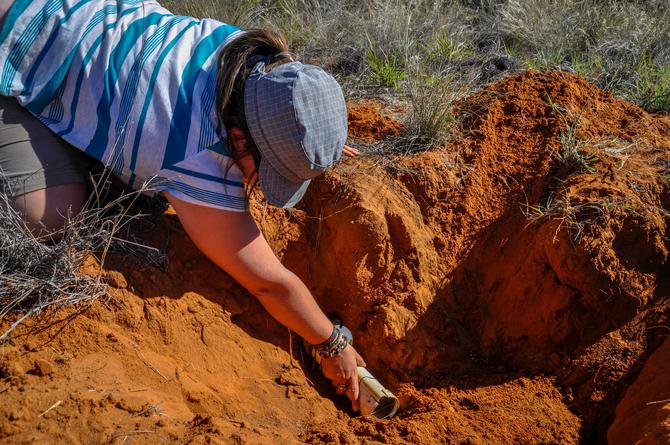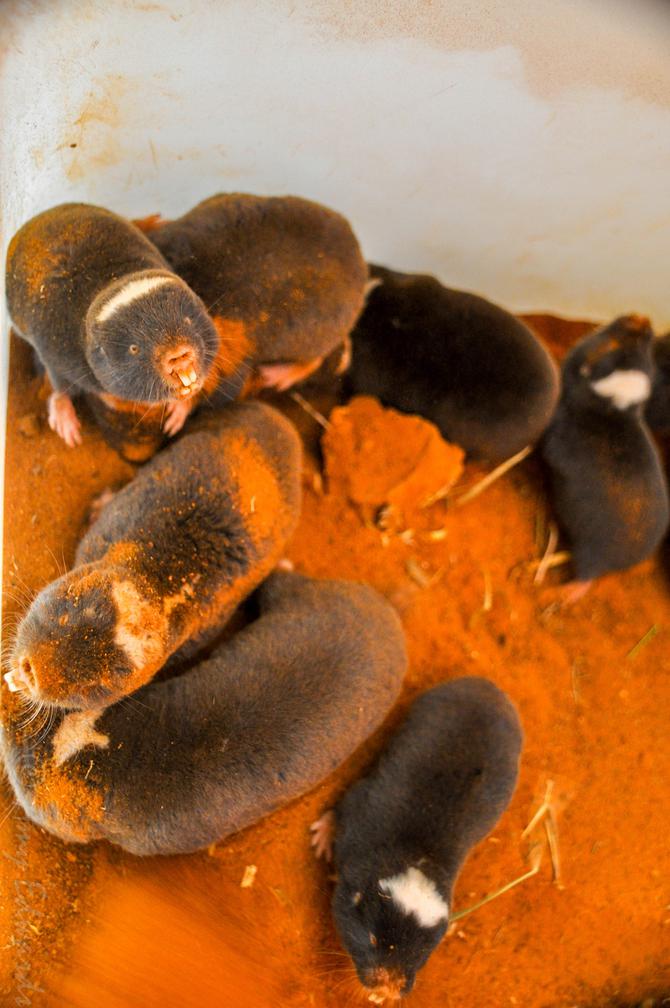Did you know that Australia has the world’s highest rate of mammal extinctions?
More than 10 per cent of all of our mammal species have gone extinct since European settlement. And this is furthered by the extensive number of species currently listed as endangered and vulnerable.
The situation has become so bad that we have started breeding animals in captivity. But for the breeding to be effective, there has to be the right about of male and female animals.
Zoology PhD candidate Amy Edwards has been examining sex allocation in three mammals to try and determine how the sex of the animals’ babies is decided.
The animals
“My research is looking at mice, South African mole rats and horses. Mice give a good, general mammal model. They’re what we expect the base mammal to be.
“The African mole rats have quite different breeding structures. We have three species; one that is monogamous, one that is polygamous, and one that has an ant-like social structure, with one rat being the queen. The offspring are workers, and they do not breed. The three species of mole rats are really closely related, which makes it possible look at the different breeding structures in animals that are very similar.
“We’ve just started looking into horses. The thoroughbred industry collects a lot of data, and we have noticed a few interesting things in regards to the amount of mating a male does, and the effect on sex ratio and how it relates to female offspring. So we are keen to do some more in-depth analysis there."

Amy in South Africa searching for mole rats.
The need to breed
“Unfortunately, many mammal breeding programs are struggling as they are experiencing large sex ratio biases. There are too many males.
“Sex allocation is a term we use to describe the amount of resources that the mother allocates to the production of a son or a daughter.
Now in the animal world, the aim of the game is to reproduce and spread your genes. And so parents should adjust the sex ratio of their offspring towards the one that will leave them the most grand-offspring.
“This means, the more babies the better. But this is not a conscious choice- it’s a physiological decision.
“This idea has been studied by biologists for decades, and recently we have discovered that it comes down to the local environment and the way that affects the mother’s physiology at the time of conception.
“We can adjust the local environment in an attempt to force the mother to have babies of one sex or the other, and generally it works.
“But there seems to be a difference between mothers, they don’t all respond in the same way.
“So researchers have attempted to look at different aspects of the environment and how it affects the physiology, but my research takes a different approach.

Mole rats have varied and fascinating breeding structures.
Rather than looking at different aspects of the environment, I am investigating whether some mothers are constrained in their ability to respond to the environment.
“I have three main constraints I am investigating."
The constraints
- Disease and infections – we know these can cause major changes to physiology. Toxoplasmosis, the infection that your cat carries can actually skew the sex ratio in either direction depending on the time of infection.
- Grandmothers and great grandmothers– during the third trimester of pregnancy the environment that the mother experiences affect her babies’ development and causes physiological changes that last for its life.
“So as each mum experiences something different, then all babies grow up differently, and may respond to the same environmental conditions in a different way.
And sperm - sperm carries either an X or a Y chromosome, which essentially determines the sex of the offspring. And scientists always thought that it was a 50/ 50 ratio and hence mothers had essentially a ‘free choice.’ But I have recently shown that this is not true. So the mother may be presented with a skewed ratio from the get-go.
“We’ve got a few possible explanations we are investigating. There could be environmental contaminants that are messing with the male’s physiology. The female herself might be adjusting it based on her presence, or maybe the male has had a lot of mates, and wants to keep spreading his genes.
Sperm sex ratio differences can be anywhere from 23 to 78 per cent - so if 78 percent of sperm carries a Y-chromosome, then she doesn’t really have a fair selection to choose from. That choice is being taken away from her. It was always thought that she had a choice- but maybe not.
“I’m hoping to use what I’ve learnt from these various constraints to better understand sex allocation, and to eventually use that research to improve breeding programs for conservation."
Come to Science Worth Seeing and hear more about Amy’s research.
Interested in conducting your own research? Apply now to become a research student.